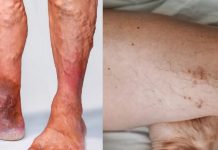Overview, Causes, & Risk Factors
A panic disorder is characterized by repeated panic attacks, or episodes of intense fear that strike without warning.
What is going on in the body?
The body has a natural “fight or flight” response to danger. When a person perceives some threat or danger, the autonomic nervous system is stimulated. This helps a person escape from danger. During a panic attack, the body’s automatic nervous system is triggered for no apparent reason.
What are the causes and risks of the condition?
While the exact cause of panic disorder is unknown, genetics and social factors may play a part. Caffeine, cocaine, and alcohol also may cause the disorder. Panic attacks can be triggered by severe or prolonged stress. This disorder occurs more often in women than men.
Symptoms & Signs
What are the signs and symptoms of the condition?
Signs and symptoms of a panic attack can include:
- shortness of breath
- chest pain
- rapid heartbeat, known as tachycardia
- dizziness
- trembling
- excessive sweating
- nausea and vomiting
- gastroesophageal reflux, or heartburn
- thoughts of dying
- numbness and tingling
- hot or cold flashes
- choking sensation
Diagnosis & Tests
How is the condition diagnosed?
Chest pain, shortness of breath, nausea, and dizziness can be symptoms of heart attack, as well as symptoms of panic disorder. Many people go to the emergency department thinking they are having a heart attack, only to find out that they are having a panic attack instead. But, before a healthcare provider can diagnose a panic disorder, tests must be done to rule out heart problems. A panic disorder is diagnosed when a person has:
- four or more panic attacks in one month, or one panic attack followed by a month of fear of having another attack
- at least four of the symptoms listed above
Prevention & Expectations
What can be done to prevent the condition?
There is no known way to prevent panic attacks. By learning about the disorder, a person can lessen the frequency and severity of the attacks.
What are the long-term effects of the condition?
If a panic disorder is not effectively treated, a person may not be able to function at work or at home. This can have a negative effect on relationships, academics, and other important parts of a person’s life.
What are the risks to others?
There are no risks to others as panic disorders are not contagious.
Treatment & Monitoring
What are the treatments for the condition?
Panic disorder is one of the most treatable mental disorders. It is best treated using anxiety eating disorders such as anorexia nervosa and bulimia cognitive behavioral therapy along with medication. The cognitive part of the therapy helps the person analyze and control thought patterns that produce panic and anxiety. Behavior therapy helps control the physical symptoms. Medications used to treat panic disorders include the newer antidepressant and antianxiety medications. Engaging in a regular exercise program has also been shown to reduce the frequency of panic attacks. People with panic disorders are strongly encouraged to reduce or eliminate caffeine, smoking and smokeless tobacco, and alcohol.
What are the side effects of the treatments?
The side effects depend on the medications used for treatment, and may include allergic reactions.
What happens after treatment for the condition?
Treatment is very effective for panic disorders. Once a person is educated about his or her illness, he or she can often reduce the frequency and severity of the attacks. Once the person is familiar with the symptoms of panic attacks, he or she can deal with the attacks without seeking care in the emergency department.
How is the condition monitored?
Ongoing monitoring of panic disorder is done by the person and his or her family. If the episodes become more frequent or more intense, the healthcare provider should be consulted.
Article type: xmedgeneral














































